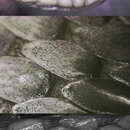en
names in breadcrumbs


Keel bellied estuarine snake, Bitia hydroidesis endemic to the coastal waters of Myanmar, Thailand, peninsular Malaysia and Singapore, an Andaman Sea - Straits of Malacca distribution. It feeds on fish, is viviparous, and much remains to be learned about its biology.
Bitia hydroides, a homalopsid snake found in Indochina, is a marine species that resembles a truesea snake with a small head, enlarged palatine teeth, narrow neck, reduced ventral scales, and somewhat flattened tail (Jayne et al. 1995 and references therein).
Snakes of the family Homalopsidae (or subfamily Homalopsinae within Colubridae) are widely distributed throughout Southeast Asia and are an ecologically dominant component of the herpetofauna over much of their range. The family includes around 3 dozen species of aquatic to semi-aquatic snake, usually associated with mud substrates and inhabiting mangrove forests, tidal mudflats, coastal waters, ponds, marshes, wetlands, and lakes across Southeast Asia. The three homalopsine genera that reportedly have mainly marine and estuarine habitats--Cerberus, Fordonia, and Bitia--can all be found in the Straits of Malacca between Sumatra and peninsular Malaysia. Homalopsids are relatively small in size (most species < 1 m as adults) and primarily nocturnal. Morphologically, the family is characterized by a suite of adaptations for aquatic life. The species for which reproduction has been described are all viviparous and all homalopsids are considered to be mildly venomous
(Jayne et al. 1995; Voris et al. 2002; Alfaro et al. 2008)
Voris and Murphy (2002) reviewed available information regarding the diets of homalopsids. They found that (1) freshwater homalopsines feed primarily on fish and the adults and larvae of amphibians; (2) at least four of the eight estuarial species specialize on crustaceans while two primarily prey on fish; (3) feeding on crustaceans appears to have evolved independently at least twice; (4) prey are usually less than 10% of the predator’s mass.
The keel-bellied water snake (Bitia hydroides) is a marine homalopsine snake. It belongs to the monotypic genus Bitia.[2]
It is found in Malaysia.
Bitia hydroides is noted for its unusual dentition. In all other snakes, any enlarged teeth are located on the dentary or maxilla, with the inner, palatine teeth of the upper jaw being smaller. In Bitia hydroides, the palatine teeth are greatly enlarged. Not enough is known about this animal's feeding behavior or ecology to attempt to infer a function of this peculiar arrangement.
The keel-bellied water snake (Bitia hydroides) is a marine homalopsine snake. It belongs to the monotypic genus Bitia.